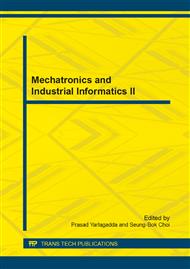p.936
p.944
p.951
p.960
p.966
p.971
p.976
p.981
p.986
Modeling Software Architecture Evolution for Electronic Commerce System Based on Graph Representation
Abstract:
With the rapid development of mobil internent and internet of things,most of electronic commerce systems need to be improved.Software architecture evolution for electronic commerce system provides an important technology measure for its improvement work. This paper try to model software architecture evolution of e-commerce based on graph representation.Firstly the paper apply a graph to represent SA of a e-commerce system,and give its formulazation description.Then establish some basic evolution rules for software architecture evolution of electronic commerce system on the basis of defining graph transformation rule,software architecture evolution operations for electronic commerce can be carryed out according to these evolution rules.Finally through an evolution case, the sophisticated process of software architecture evolution for the electronic commerce system is described.This research work can help to upgrade the electronic commerce. system.
Info:
Periodical:
Pages:
966-970
Citation:
Online since:
July 2014
Authors:
Price:
Сopyright:
© 2014 Trans Tech Publications Ltd. All Rights Reserved
Share:
Citation:


